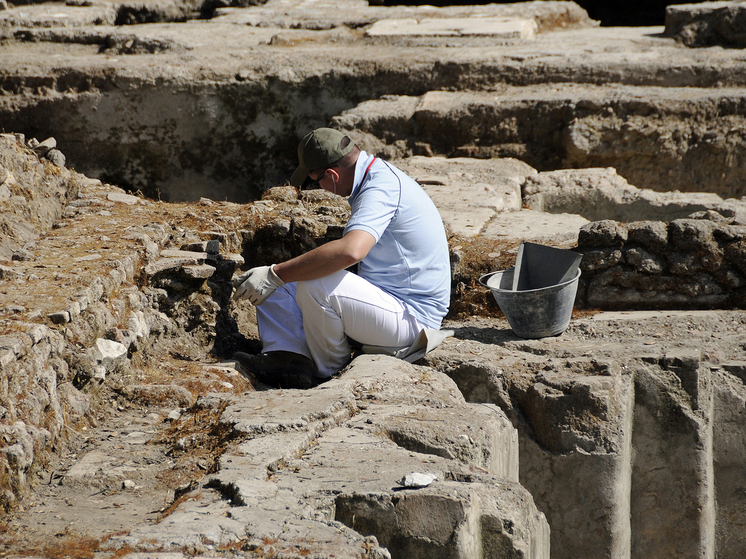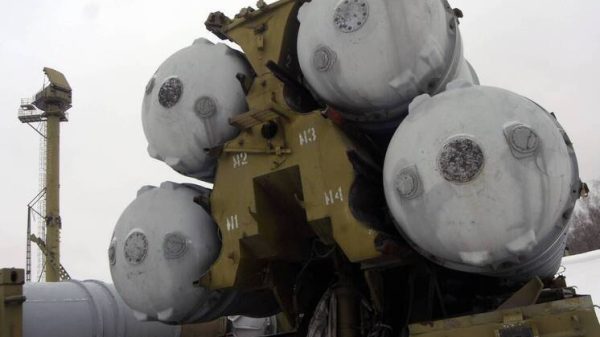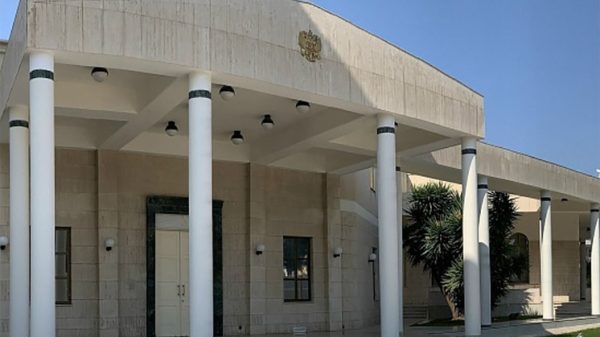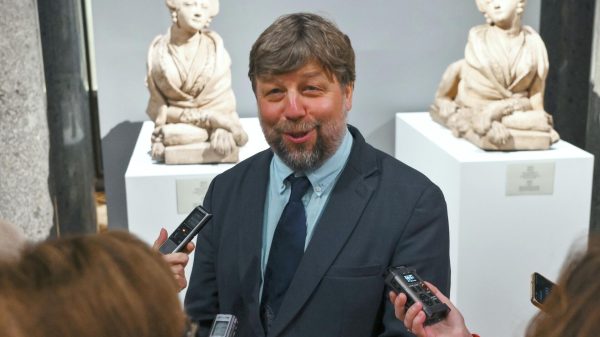The death of horses in a stable showed researchers the way to unraveling the terrible circumstances of the fire
A gold earring found in the burnt ruins of an Iron Age village may tell the story of a “moment in time,” archaeologists say. A two-story building that burned to the ground more than 2,000 years ago in the Pyrenees Mountains in northeastern Iberia, Spain. The flames consumed the wooden structure located in the Iron Age settlement, killing six animals in the stable.

The fates of the people who used the building are unknown, but details of their lives are preserved in handfuls of charred evidence, including shards of pottery, textile tools and a metal pickaxe, which archaeologists recently discovered.
< p>They also found one valuable item: a gold earring measuring 0.8 inches (2 centimeters) long and 0.8 inches wide, CNN reported. According to a study published Friday in the journal Frontiers in Environmental Archaeology, it was hidden in a small container set into the wall, perhaps to protect it from suspected looters who started the fire.
The settlement at this site is called Tossal de Baltarga, and thousands of years ago this village was inhabited by a community of Iberians known as the Cerretani. This group predates the Roman occupation of Iberia and left their mark on the region in the form of mountain rock carvings. However, researchers are still trying to piece together information about Cerretani life, including the meaning of these carvings, said lead study author Dr. Oriol Olesti Vila, associate professor at the Autonomous University of Barcelona in Spain.
Since 2011, scientists have discovered several burnt buildings in Tossal de Baltarga, all dating back to the third century BC. Archaeologists recently excavated a non-residential mixed-use structure dubbed «Building G,» the best-preserved building on the site. It was about 26 feet (8 meters) long and about 7 feet (2 meters) wide, and its contents provide unprecedented insight into Cerretani life in Iron Age Iberia.
But the blackened ruins also tell a darker story. The destruction of the entire settlement by fire indicates that the fire was started intentionally. And the chronology of the fire suggests that the arsonists may have been an invading army under the command of Hannibal, the Carthaginian general who led forces against the Roman Republic and crossed the Pyrenees around this time, during the Second Punic War (218-201 BC). .), the researchers write in their study, CNN reports.
Although the top floor of Building G collapsed when the load-bearing beams burned, it still retained traces of its former structure, with mud bricks laid on the eastern floor and stones on the western floor. According to scientists, one explanation is that the upper floor was divided into two separate rooms, which were used for different tasks.
More than 1,000 pottery fragments from the upper floor represented a variety of vessels used for cooking, eating and drinking, and for storage. Eight cooking vessels were almost intact, and chemical analysis showed that they contained organic remains: animal fats, dairy products and plants. The design of some vessels indicated that they were acquired in another region of the Pyrenees as a result of trade. More than a dozen loom weights and spindles told researchers that the building's inhabitants spun and wove wool.
In the stable, scientists discovered the remains of a horse, four sheep and a goat. The horse was kept in a separate stall, and the charred particles represented various native grasses and plants, as well as cultivated grains, which were stored there as livestock feed.
According to Oleshti Vila, the presence of a horse in the stable suggested that these people were richer than some of their neighbors.
“In ancient times, horses were not a typical animal that an ordinary peasant family would have,” says Oleshti Vila. — «Because they were expensive to feed, and they were not kept for meat or milk. In general, horses are associated with the elite.»
This find gave archaeologists another important clue to the social structure of ancient Iberia, pointing to the possibility of the existence of a class of “aristocrats,” write the study authors.
Their findings shed light on the Cerretani way of life, pointing to textile production , use of agriculture and natural resources. Analysis of the hidden earring revealed traces of silver mixed with local gold, indicating that the Cerretani were also familiar with metalworking.
According to Dr. Bettina Arnold, a professor in the Department of Anthropology at the University of Wisconsin-Milwaukee, who was not involved in the study, the discovery of a “moment in time” such as this is an exceptional event in archaeological history. According to Arnold, the site provides important information about the daily life of the Pyrenees population during the Iron Age during this pivotal period of history.
“The most impressive aspect of the Building G excavations is the wide range of scientific analyzes conducted on the finds there, which show that the community was self-sufficient in some industrial activities, such as spinning and weaving wool,” Arnold said.
However, the analysis also showed that the community was part of a larger regional network of exchange “through trade and, presumably, obligations” linking them to the leadership of the Iberian tribe, she added.
The fact that the animals died inside the stables, gave researchers another clue to the terrible circumstances of the fire.
During the Iron Age, when people lived in wooden houses heated by fire, buildings often accidentally burned down. But if it were such a fire, animal owners would likely open the stable doors to save their livestock, says Oleshti Vila.
They would also likely return after the fire subsided to to take back their treasure — a gold earring that they hid in a bank.
“This also indicates some kind of conflict or some kind of violent aggression,” said Olesti Vila. Scholars suspected the community may have been involved in the Second Punic War and Hannibal's crossing, “because of the chronology and context,” but since the exact date of the fire is unknown, the connection is just a hypothesis, he said.
Indeed, the existence of violent raids between the peoples of Iron Age Europe, when bands of invaders made off with valuables, livestock and even people, “is well documented by archaeological research,” Arnold added, “and is not necessarily associated with any specific historical event such like the campaigns of Hannibal.”


























































Свежие комментарии